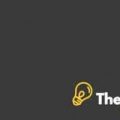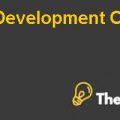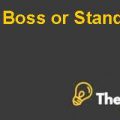
Calaveras Vineyards
Calaveras Recent History:
Calaveras Vineyards is situated in Alameda Valley, California with total area of 220 acres in which 175 acre is occupied by the vineyards and the other area has various equipment sheds, including a building and a farmhouse with offices, guestrooms, and the tasting and sales room.
Calaveras Vineyard was founded by Esteban Calaveras in 1883 to make wine for the church. By 1950s, the operations of vineyard expanded into the production of table wines for sale to the retailers and the restaurants. The ownership of vineyard has changed over the years as it was passed from one large corporate wine producer to other, which also changed the ways of marketing and sales.
The recent financial performance of the company has improved and its operating profit for the year 1993 is $259672, which has increased from $13241 in 1992. The company was making loss in the years 1990 and 1991. This shows that the performance of the company has improved in the recent years.
Receivables:
The management of Calaveras has planned to adopt the new market company, Winston-Fendall, which is a well-established wine marketer on the West Coast where Calaveras has strong sales. Winston-Fendall will position Calaveras as the flagship account. Winston-Fendall will collect all the receivables on the behalf of Calaveras and will remit them to Calaveras. Any receivable unpaid after 90 days will also be paid by the marketing company to Calaveras on a non-recourse basis. The arrangement between the two parties is of nonrecourse factoring in which the factor,which is Winston-Fendall, will have all the responsibility for all the bad debts. In this agreement if the customer does not pay an invoice, either through insolvency or protracted default, then the company will still receive the amount of receivables from Winston-Fendall.
Free Cash flow:
The free cash flow calculated with all the recommendations of the Anne Clemens in the years is
Years 1994 1995 1996 1997 1998
FCF 360 610 747 932 1119
Recommended Discount Rate:
Recommend Discount Rate
The discount rate of the company is taken by taking the projected data from the balance sheet given and the debt equity projected ratio for 1994 will be 28% and 72% of Equity and Debt respectively. The cost of debt is already given however; the cost of equity is not given. In order to calculate the cost of equity through CAPM the average of the betas of comparative industries is taken which is 0.906.
The debt and equity ratio of the company is changing in the financial forecast year by year therefore;the cost of capital is different for every year.............................
This is just a sample partial case solution. Please place the order on the website to order your own originally done case solution.








